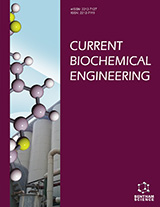Abstract
Background: Microbial phytases are added to animal feed to hydrolyze phytic acid (myoinositol hexakisphosphate, IP6) and phytate (salt of phytic acid) increasing phosphorus bioavailability. Novel phytases with enhanced bio-efficacy are being developed.
Objective: To characterize the biochemical and enzymatic properties of a novel consensus bacterial 6- phytase and its variant (PhyG), produced in Trichoderma reesei.
Methods: The in vitro specific activity, kinetic parameters, pH-activity profiles (relative to pH5.5), IP6 degradation, hydrolysis products and phosphate release of the phytases were determined using sodium phytate substrate. Melting point (Tm) was determined by differential scanning calorimetry and thermostability assessed by measuring residual activity at different temperatures. In vivo effects of PhyG supplementation at 0 to 1,000 FTU/kg on ileal IP6 digestibility and IP ester concentrations were determined in piglets.
Results: Both phytases exhibited pH optima of 3.5-4.5, high relative activity over a wide pH range (pH2.0-5.0), and substantial relative activity at pH1.5. At pH3.0, the specific activity of the PhyG variant was 1487 U/mg protein and at pH3.5 the kinetic constants were 240 μM (Km) and 1873 s-1 (Kcat). The hydrolysis of IP6 by both phytases was rapid. The major initial hydrolysis product was DLI( 1,2,3,4,5)P5, designating the phytases as bacterial 6-phytases (EC 3.1.3.26). Hydrolysis occurred at the D-3 (L-1) position in ~30% of instances, indicating a dual-specificity.
Conclusion: Both phytases showed high thermostability compared to wild type and existing commercial bacterial 6-phytases; PhyG exhibited 95% residual activity after 20 min incubation at 85.4ºC (pH5.5), Tm50 of ~93.2ºC and Tm of 98.8ºC. In vivo, PhyG at 1,000 FTU/kg achieved an ileal digestibility of IP6 of 89.3%.
Keywords: Buttiauxella sp., consensus bacterial 6-phytase, pH optimum, phosphate, thermostability, ileal phytate degradation, phytate degradation pathway.
[http://dx.doi.org/10.1080/17450390109386197] [PMID: 12357589]
[http://dx.doi.org/10.1016/j.anifeedsci.2006.06.010]
[http://dx.doi.org/10.1146/annurev-animal-031412-103717] [PMID: 25387021]
[http://dx.doi.org/10.1080/10408398.2020.1749026] [PMID: 32274948]
[http://dx.doi.org/10.1002/jsfa.6998] [PMID: 25382707]
[http://dx.doi.org/10.1021/acs.jafc.5b01996] [PMID: 26111064]
[http://dx.doi.org/10.1016/j.livsci.2009.01.006]
[http://dx.doi.org/10.1080/00071669108417339] [PMID: 2049622]
[http://dx.doi.org/10.2527/2001.7971840x] [PMID: 11465371]
[http://dx.doi.org/10.5713/ajas.2008.70089]
[http://dx.doi.org/10.1016/j.anifeedsci.2020.114481]
[http://dx.doi.org/10.1016/j.aninu.2019.11.003] [PMID: 32211525]
[http://dx.doi.org/10.1016/j.toxrep.2020.07.004] [PMID: 32714839]
[http://dx.doi.org/10.1093/molbev/msy096] [PMID: 29722887]
[http://dx.doi.org/10.1016/j.aquaculture.2008.01.021]
[http://dx.doi.org/10.1007/s10930-019-09838-3] [PMID: 31119599]
[http://dx.doi.org/10.1093/oxfordjournals.molbev.a003851] [PMID: 11319253]
[http://dx.doi.org/10.1093/jaoac/84.3.629] [PMID: 11417623]
[http://dx.doi.org/10.1021/jf9709257]
[http://dx.doi.org/10.1016/0003-2697(88)90374-0] [PMID: 3245565]
[http://dx.doi.org/10.1021/jf9603238]
[http://dx.doi.org/10.1016/0377-8401(95)00916-7]
[http://dx.doi.org/10.1016/B978-0-12-805419-2.00003-4]
[http://dx.doi.org/10.1017/JAN.2019.1]
[http://dx.doi.org/10.1111/jpn.12258] [PMID: 25405653]
[http://dx.doi.org/10.1017/S0954422411000151] [PMID: 22309781]
[http://dx.doi.org/10.1017/S0043933911000031]
[http://dx.doi.org/10.3389/fvets.2019.00019] [PMID: 30838217]
[http://dx.doi.org/10.3791/55262] [PMID: 28287565]
[http://dx.doi.org/10.1046/j.1365-2621.2002.00621.x]
[http://dx.doi.org/10.1093/jas/skz151] [PMID: 31056701]
[http://dx.doi.org/10.2527/jas.2011-3866] [PMID: 22228039]
[http://dx.doi.org/10.3382/ps/pex012] [PMID: 28204754]
[http://dx.doi.org/10.1021/jf00089a013]
[http://dx.doi.org/10.1016/S0168-1656(00)00331-X] [PMID: 11035187]
[http://dx.doi.org/10.1371/journal.pone.0065062] [PMID: 23741456]
[http://dx.doi.org/10.1080/1745039X.2012.735082] [PMID: 23098167]
 13
13

















